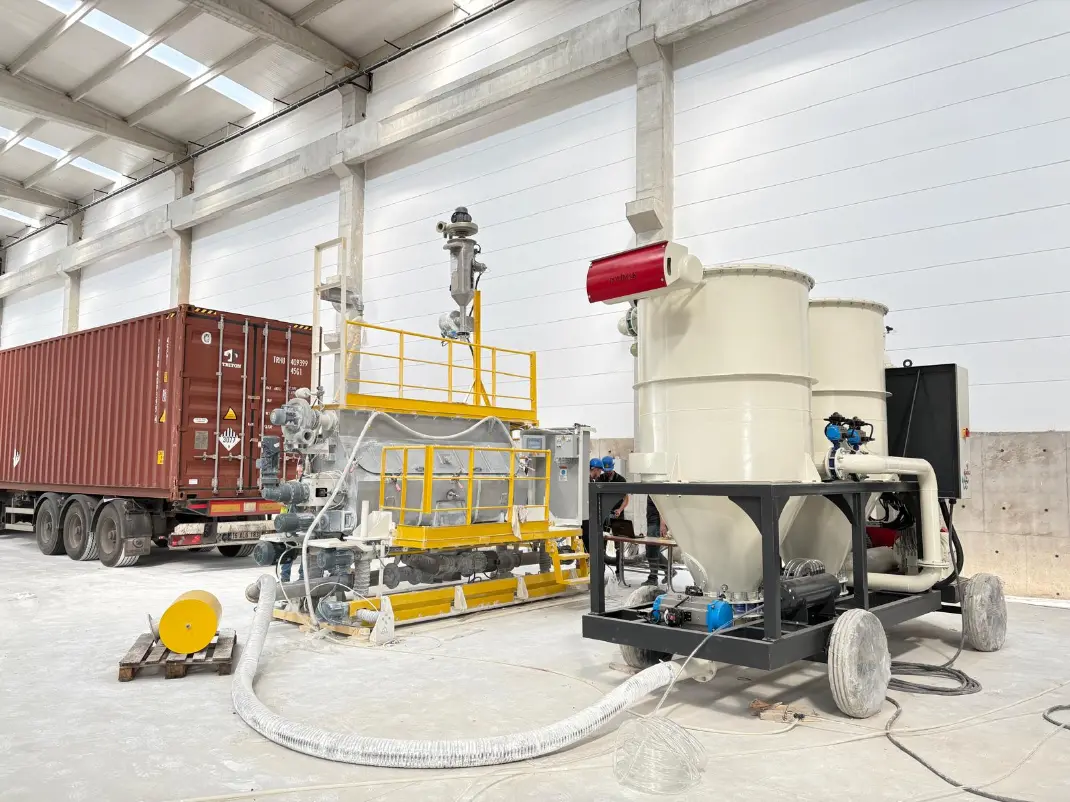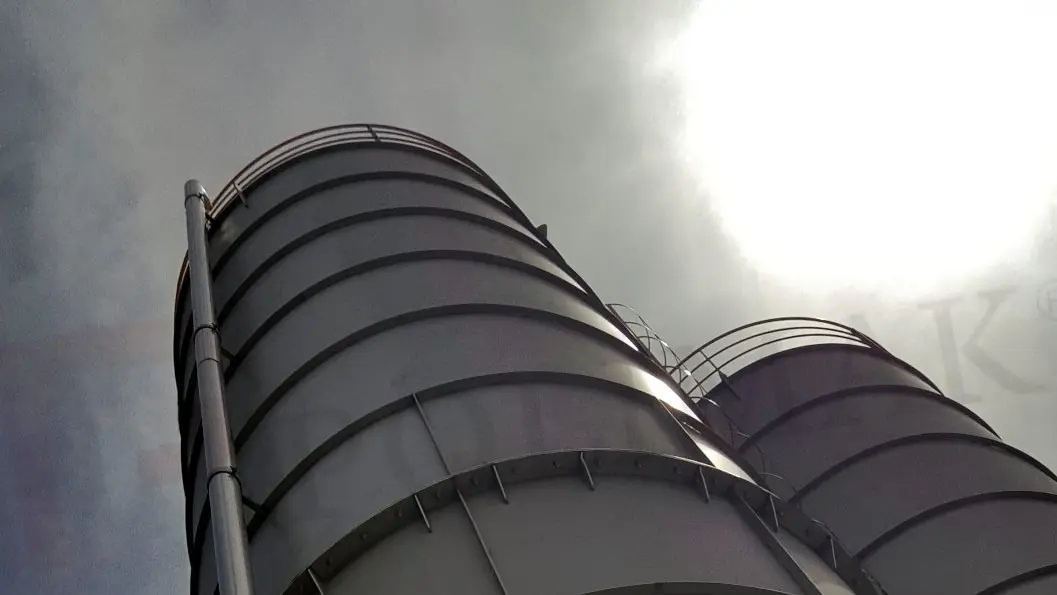Truck to Silo Filling
Filling silos directly from tanker trucks is a fundamental process in many industrial operations dealing with powdered or granular bulk materials such as cement, lime, flour, plastic pellets, or fly ash. This configuration enables efficient unloading from the tanker into fixed silo storage, minimizing dust, spillage, and manual handling while ensuring material integrity.

How the System Operates
• Truck Positioning & Connection:
A tanker truck is positioned in the designated unloading zone and connected to the silo fill line via flexible or rigid pneumatic transfer pipes.
• Pneumatic Conveying:
Bulk material is pneumatically conveyed from the tanker into the silo through transfer pipes, ensuring a controlled and efficient flow during the unloading process. The system can operate under pressure or vacuum, depending on the material and facility requirements.
• Air Venting & Filtration:
As air and material enter the silo, a vent filter ensures displaced air is cleaned of dust particles before being released into the atmosphere. The vent filter is often equipped with pulse-jet cleaning to maintain its effectiveness.
• Monitoring & Safety:
Level sensors inside the silo prevent overfilling, while pressure relief valves and emergency shutoff systems ensure safe operation.

Key Components
• Filling Pipe & Couplings: Durable and standardized pipe connections for fast and safe coupling between truck and silo.
• Ventilation & Filtration System: Top-mounted dust collectors with high-efficiency filters (e.g., cartridge or bag filters) prevent dust emissions.
• Level Detection & Monitoring: Radar, ultrasonic, or capacitive sensors ensure the silo doesn't overfill and provide real-time feedback to operators.
• Safety Valves & Pressure Relief Systems: Critical safety mechanisms prevent excessive pressure buildup, protecting both the silo and operators.

Advantages & Benefits of Truck to Silo Filling
- Efficient Unloading: The system enables rapid and clean transfer of bulk material. This process requires minimal manpower, increasing overall efficiency.
- Reduced Dust Emissions: Advanced filtration captures dust particles effectively. This ensures compliance with environmental standards and promotes a cleaner work environment.
- Operator Safety: Operators can perform essential tasks from the ground, eliminating the need to access elevated or confined areas. Automated sensors further reduce operator exposure to potential hazards.
- Versatile Solutions: The system is suitable for a wide range of materials. It handles both abrasive substances and fine powders with ease.
- Integration: It can be seamlessly integrated into automated plant control systems. This allows for synchronized and efficient operation across the facility.

Industry-Specific Examples
- Cement Industry: Bulk cement is pneumatically transferred from tankers to on-site silos at batching plants. Heavy-duty steel pipelines and high-capacity dust collectors ensure efficient transfer and dust control.
- Food Industry: Flour, starch, and other powdered ingredients are discharged into stainless steel silos using hygienic, food-grade equipment. Clean-In-Place (CIP) filter systems maintain sanitary conditions during the process.
- Plastic Industry: Plastic pellets are conveyed using dilute-phase pneumatic systems designed for gentle handling. This minimizes pellet degradation and preserves material quality.
- Chemical Industry: Fine powders and granular chemicals are transferred through sealed pneumatic systems to prevent contamination. Corrosion-resistant components and specialized filtration ensure safety and compliance with regulatory standards.